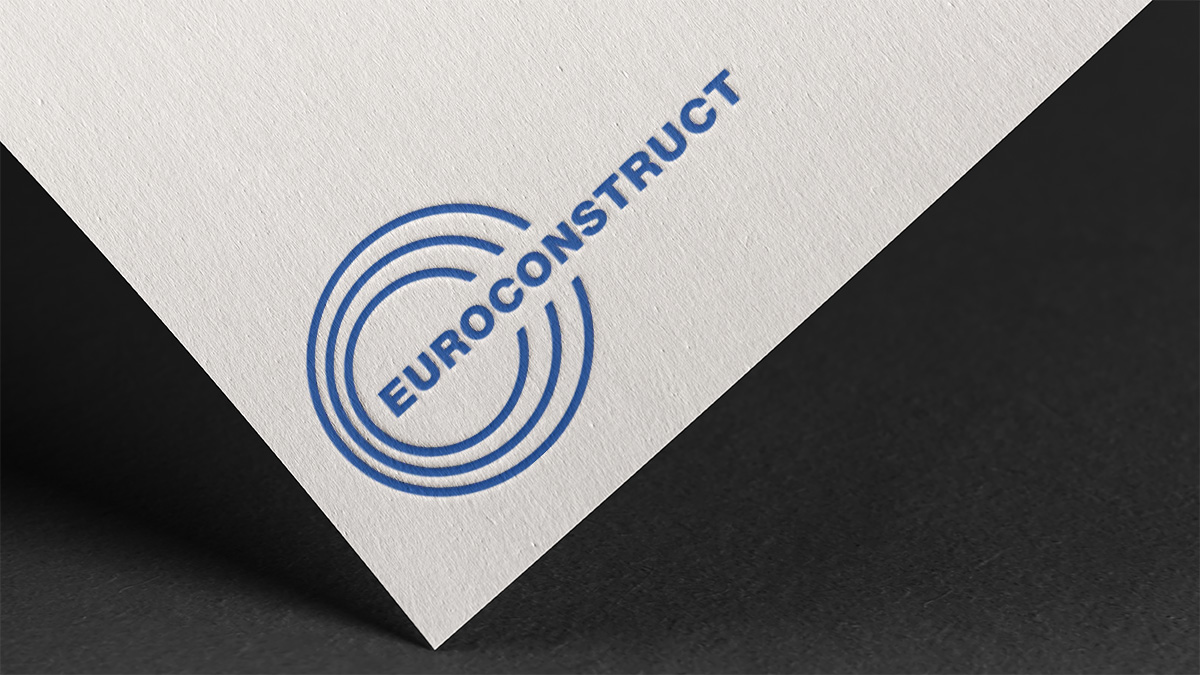
The newly introduced “superbonus” allows a 110% tax deduction for energy efficiency, anti-seismic interventions and photovoltaic plans. Cresme has estimated a potential impact of this measure on the construction sector ranging from 2.4 to 8.1 billion euro. However clear and well-functioning rules are needed.
The Relaunch Decree (19 May 2020), converted into law n. 77/2020 (17 July 2020), introduced a new incentive for energy efficiency, anti-seismic interventions and photovoltaic plans with the aim of revitalising the construction sector by promoting environmental sustainability in particular. It allows a tax deduction of 110 per cent, to be divided into five annual instalments, for expenses incurred between 1 July 2020 and 31 December 2021 related to specific interventions aimed at increasing the energy efficiency of buildings (ecobonus), at reducing the seismic risk (sismabonus) and interventions relating to the installation of photovoltaic systems and columns for recharging electric vehicles.
But there are different aspects to be considered to clearly define the impact and the potentiality of this measure. First of all, it should be remembered that, in approving the final text of the Relaunch Decree, the most relevant amendment, the one that could have extended the effectiveness of the legal provision to the whole of 2022, was not accepted. In Cresme’s estimates, this amendment could have multiplied the impact by identifying an additional potential of 7.1 billion euros for the entire construction sector (over the two years 2021 and 2022, assuming an extension of one year with respect to the original text) and an additional 940 million euros for photovoltaic systems. The basic estimate, on the other hand, which considers the hypothesis that it will end in 2021, identifies a much lower effect with an increase in expenditure of approximately 2.4 billion euros, again for the entire construction sector (including plants).
What does the super-bonus consist of?
Theoretically it consists of not charging anything to those who want to increase the energy efficiency and/or seismic safety of their property. How does this translate into the Decree?
- A 110% deduction from income tax of expenses sustained, divided into five annual instalments. Alternatively, the possibility to transform the tax deduction into a tax credit it is given, which can be subsequently transferred to other parties, including banks and intermediaries. Or to convert it into an invoice discount (up to the amount paid for the work carried out) given by the supplier.
- The rate of 110% is applied exclusively for interventions that involve the improvement to the building of at least two energy classes or one seismic risk class.
- As far as energy efficiency measures are concerned, they must include at least one of the following:
- Expenditure shall be sustained between 1 July 2020 and 31 December 2021.
- The 110% rate is also applied to all other energy efficiency measures (as envisaged by the Law Decree 63/2013) provided that at least one of the so-called driving interventions (those summarised in points i, ii, iii above as far as the anti-seismic interventions) is carried out.
- The 110% rate is also allowed for photovoltaic systems up to a total amount of expenses not exceeding 48,000 euros and for the related storage systems.
- The same rate of 110% and the division of the deduction into 5 annual instalments is also envisaged for electric vehicle charging stations.
- The beneficiaries of the whole measure are: condominiums; individuals; bodies for social housing (or with similar purposes); cooperatives with undivided ownership, non-profit organisations.
- Second homes, also single-family units, are admitted into the incentives (initially excluded from the incentive)
- All expenses sustained for the issue of certificates and affidavits by qualified technicians are deductible.
- The possibility of using, alternatively to the income tax deduction, also the discount on the invoice or the transformation into a tax credit and its transfer, is extended to all interventions for the generic renovation of the building (50% incentive), energy efficiency interventions in the absence of one of the three so-called driving works (65% incentive), the recovery or restoration of facades (90% incentive).
The critical points which, if not solved, could make the measure largely ineffective
However, there are some critical points which, taken as a whole, can significantly affect the impact of the measure.
First of all, the timing. The Decree was converted into Law 77 of 17 July 2020. The implementing decree of the Ministry of Economic Development was prepared for August 17. Then there have been questions, clarifications and circulars of the Revenue Agency (which often go so far as to redefine the regulations). Only in the first days of October did the Asseverations and Technical Requirements decrees reach the Official Gazette. In short, the actual launch of the regulation could not take place before October 2020. In the meantime, all the parties involved (technicians, multi-utilities platforms, credit institutions, construction companies, installers, accountants, law firms, etc) should have organised themselves to meet the demands. It is clear that the effects in 2020 could be nil, at most compensating for the losses due to waiting for the measure. Even in 2021, this being the case, the effect could be much more limited than the real potential of the measure.
Then there is the matter of tax capacities. Since these interventions are quite onerous and with deductions at high rates and with a distribution over five years, the individuals who can deduct “important” sums from income tax must have a tax capacity that few have (according to the statistics of the Department of Finance). Moreover, even for companies (small, in the majority of cases), the possibility of taking over the tax credit after a discount on the invoice, without giving it to third parties, seems very limited. There are banks and some credit institutions that already have apparently adequate packages on offer, but what will be the actual availability in terms of guarantees and bureaucracy? The answers do not seem to be there at the moment. There are some platforms put in place by the multiutilities, which should have sufficient tax capacity to cope with numerous requests for the transfer of tax credits and which, in recent years, have developed a managerial capacity to deal with this type of complex operations. But the question is whether such platforms will be available (in order to have economic-financial equilibrium), also for “small” interventions.
There are other obstacles, for example: the possession of the requirements linked to the Minimum Environmental Criteria; the modalities of the discount on the invoice and the time required for the transfer of the relative tax credit; the issue of the condominium extension of urban planning compliance; the demonstration of the fairness of costs; the complication and timing of authorisation processes where in some cases there are no terms or deadlines for the granting of authorisations. And all in a situation where the administrative offices, in recent months (Covid19 case), have had an overall reduced activity.
Estimated impact on construction investments: up to 8 billion over the two-year period 2021-2022; just over 2 billion if the expiration in 2021 is maintained
Within such a complex and unclear scenario, a first estimate of the impact of the measure has been made. The basic hypothesis is that some controversial aspects will be soon clarified, that there will be a wide willingness on the part of the banks to acquire tax credits; finally, that no “picks” are triggered that would undermine the purpose, scope and effectiveness of the rule.
The potential amount
The following table shows some data regarding the Italian building stock, that are useful to define the privileged scope of the Super bonus effects. It is clear that there are buildings that are more likely to be the subject of interventions than others. Needless to say, the coating of a building on a southern island (like Lampedusa, zone A) is neither appropriate nor convenient. Nor are the anti-seismic interventions in zone 4 (seismic zone 1: high risk, 2: medium risk, 3: low risk, 4: very low risk). In addition, a proportion of buildings constructed before the Second World War are not suitable for coating interventions, and generally have masonry with a good thermal mass.
A frame of reference – selected measures of the current housing stock in Italy
Thousands of units.
| Indicator | Single-family | Small condominium (up to 8 dwellings) | Big condominium (more than 8 dwellings) | Total |
|---|---|---|---|---|
| Buildings | 6,427 | 5,361 | 633 | 12,420 |
| Climate zone D, E, F | 4,556 | 3,935 | 477 | 8,968 |
| Seismic zone 1,2,3 | 4,668 | 4,203 | 494 | 9,365 |
| Built after 1945 | 4,661 | 4,079 | 553 | 9,293 |
| Number of dwellings | 6,427 | 15,128 | 10,442 | 31,997 |
| Energy consumption (TW) | 28.0 | 17.2 | 20.0 | 65.1 |
| Heat consumption (TWt) | 135.4 | 80.9 | 83.4 | 299.6 |
S: Cresme.
Considering these features of the building stock a potential universe of 6 million buildings, made up of 19 million homes, has been estimated.
In economic terms, the potential amount of seismic safety works promoted by the Relaunch Decree is estimated in 721 billion euros. The potential amount of work in the field of energy efficiency, on the other hand, adds up to almost 600 billion euros.
Overall, for the two purposes of the work, the potential amount of interventions adds up to 1,317 billion euros. This is the maximum possible catchment area (with no time limits, nor limits to the availability of the owners and subjects involved in the standard). It is clear that these are unreal amounts. And yet it is good to know, compared to the Italian building heritage, that there are almost no borders to improvement.
More realistically, CRESME has analysed in depth all the variables that have characterised the use of tax incentives in construction over the last 23 years. In particular, it focused on changes in the behaviour of users in relation to the complexity of bureaucratic requirements; changes in deduction rates; changes to incentive measures; characteristics of the building types of efficient buildings; characteristics of the owners of the properties.
The examination and processing of these variables has defined a multiplication coefficient of the current applications and average amounts per application, in relation to the types of buildings and interventions covered by the Decree.
The final outcome of the study made it possible to estimate the following additional amounts resulting from the measure:
In the hypothesis of an extension of the benefits to the whole of 2022 (anti-seismic, energy efficiency, photovoltaic, recharging columns): 8,069 million, 1,614 of which in 2021 and 6,455 in 2022.
In the hypothesis of maintaining the current rule (conclusion to the end of 2021): 2,421 million, all in 2021.
